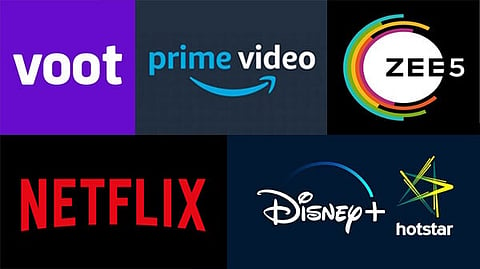

OTT platform and digital media has picked up a fast pace in India especially with internet penetration reaching over 50% of the Indian populace which in sheer population numbers works out to staggering (more than) 700 million. Hence, the very concept of OTT is revolutionary in terms of its audience reach. There have been widespread concerns about digital content, especially on OTT platforms which has been raised in Indian parliament in recent times.
A few of the series even were subject of controversy and cases reaching apex court over freedom of speech e.g. Mirzapur and Tandav. In September 2019, the Internet and Mobile Association of India (IAMAI) came up with a self-regulatory framework with a two-tier structure, which was signed by 16 major OTT players including Netflix, Amazon Prime Video, Disney, Hotstar and others. However, the government rejected the code due to lack of a comprehensive complaint redressal system and absence of a third-party monitoring mechanism. The government felt streaming content needed some stringent guidelines to regulate it.
In an interesting development, the Indian government, within the realm of the Information Technology (Intermediary Guidelines and Digital Media Ethics Code) Rules 2021, has recently brought in detailed guidelines for digital content on both digital media and OTT platforms. The main highlights of the said guidelines are enunciated below.
1. A 3-tier or III level mechanism for complaints vis-à-vis OTT platforms has been notified.
1st tier/ Level I
Every platform must appoint a) chief compliance officer b) nodal contact person and c) a resident grievance officer
2nd Tier/ Level II
If a complainant is not satisfied, it can escalate the complaint to 2nd tier i.e., the self-regulatory body, which is collectively established by the OTT platforms. This body would be headed by a retired judge of the Supreme Court, a High Court, or an independent eminent person from the field of media, broadcasting, entertainment, child rights, human rights or other relevant fields. This self-regulatory body can act as a censor and also has powers to delete or modify any content for preventing incitement to the commission of a cognizable offence relating to public order.
3rd tier/Level III
In this final tier, the government has empowered itself to deal with any such offensive content. For this purpose, an inter-ministerial committee will perform this function and it will largely have the same powers as the collective self-regulatory body of the OTTs.
2. Content involving nudity, morphed pictures of women has to be removed in within 24 hours
3. OTT platforms are required to self-classify its content into five categories i.e., U (Universal), U/A 7+, U/A 13+, U/A 16+, and A (Adult)
4. Parental locks should exist for content classified as U/A 13+ or higher
5. Reliable age verification mechanisms for content classified as 'A'
6. Publishers of news on digital media would be required to observe Norms of Journalistic Conduct of the Press Council of India and the Programme Code under the Cable Television Networks Regulation Act thereby providing a level playing field between the offline (Print, TV) and digital media.
As can be seen, the Indian government stepped in to issue the guidelines to address widespread concerns about issues relating to digital contents both on the digital media and OTT platforms. These concerns as per the government were raised by the Civil Society, filmmakers, political leaders including Chief Minister, trade organizations, and associations.
The concerns so raised highlighted the imperative need for an appropriate institutional mechanism. Further, there were many court proceedings in the Supreme Court and High Courts, where these judicial bodies also urged the government to take suitable measures. Once the rules are published, it will be interesting to see if they are challenged being unconstitutional in particular equating digital media with the print publication whereas the Information Technology act specifically excludes the print media.
Authored by: -Mr. Ranjan Narula – Managing Partner & Mr. Rajiv Suri – Partner, RNA Technology and IP Attorneys
Follow us on Google News
